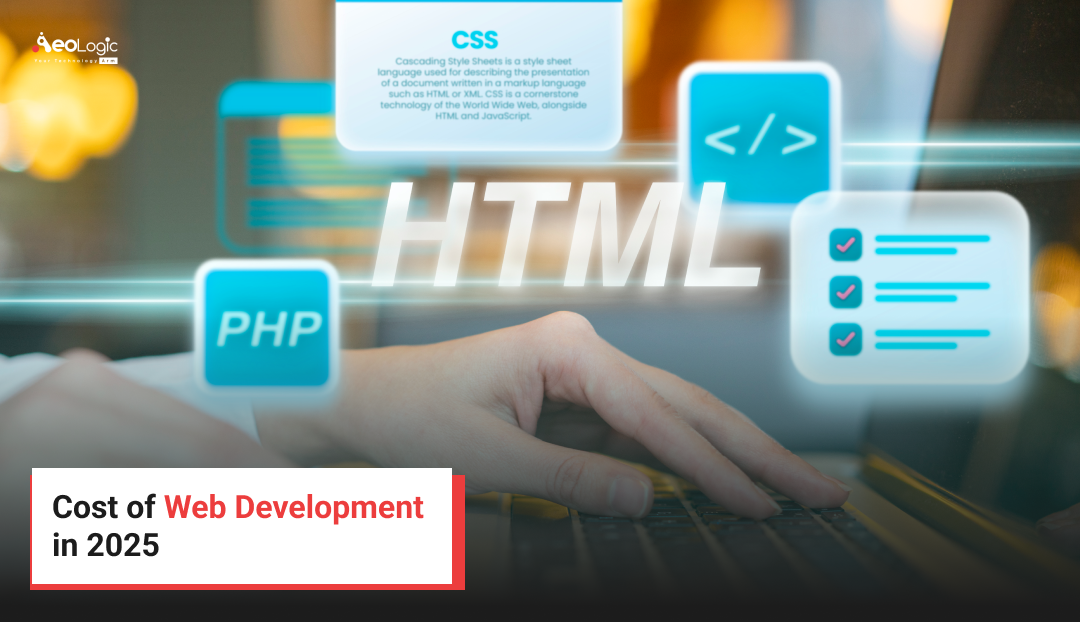The Internet of Things (IoT) has completely transformed how businesses operate, innovate, and interact with customers. From smart factories and connected vehicles to intelligent healthcare systems, IoT solutions are unlocking new possibilities everywhere.
However, despite its rapid growth, challenges in IoT implementation continue to be a major concern for many organizations. While IoT brings endless potential, implementing it successfully is not as easy as it sounds. Many businesses face technical, operational, and strategic roadblocks that slow down progress or lead to failed deployments.
But here’s the catch — while IoT brings endless potential, implementing it successfully is not as easy as it sounds. Many organizations face technical, operational, and strategic roadblocks that slow down progress or lead to failed deployments.
Data Security and Privacy Concerns
Security is hands down the biggest challenge in IoT implementation. With millions of connected devices transmitting data across networks, even a single vulnerability can open doors for cyberattacks.
IoT devices are often built for performance and cost-efficiency rather than security. As a result, they can be exploited through weak authentication, outdated firmware, or unencrypted data transfer. Data privacy is also a growing concern, especially in sectors like healthcare, finance, and logistics, where sensitive information is constantly exchanged.
How to Solve It:
-
Implement End-to-End Encryption: Secure data during transmission and storage with strong encryption protocols.
-
Regular Firmware Updates: Keep device software up to date to patch vulnerabilities.
-
Use Secure Authentication: Multi-factor authentication and unique device IDs add another layer of protection.
-
Network Segmentation: Isolate IoT devices from critical business systems to limit potential damage.
-
Compliance and Audits: Follow data protection regulations like GDPR and conduct regular security audits.
Informational keywords: IoT security challenges, IoT data protection, IoT privacy solutions.
Connectivity and Network Issues
Reliable connectivity is the backbone of any IoT ecosystem. But in reality, maintaining stable and consistent connectivity across multiple devices and locations can be tricky. IoT devices often operate in remote or low-network areas, causing communication breakdowns and data delays.
Different IoT devices also rely on different communication protocols such as Wi-Fi, Bluetooth, Zigbee, or 5G, which can create compatibility issues.
How to Solve It:
-
Choose the Right Communication Protocol: Select based on range, power, and bandwidth needs.
-
Adopt Edge Computing: Process data locally to reduce dependency on constant connectivity.
-
Use Redundant Networks: Backup connections like cellular or satellite networks ensure uptime.
-
Monitor Network Health: Use IoT analytics tools to detect latency or performance issues in real-time.
Informational keywords: IoT connectivity issues, IoT network management, IoT edge computing.
Lack of Standardization and Compatibility
The IoT world is huge — thousands of manufacturers, devices, and software platforms, all working differently. Unfortunately, this lack of universal standards leads to compatibility problems.
For instance, one device may use a proprietary communication protocol, while another follows open standards. When integrated into the same system, they may not “talk” properly. This makes scaling up or integrating new devices harder over time.
How to Solve It:
-
Use Open Standards: Prefer devices and platforms that support open communication protocols like MQTT, CoAP, or HTTP.
-
IoT Middleware: Implement middleware that bridges communication between different devices.
-
Vendor Collaboration: Partner with IoT vendors who prioritize interoperability.
-
Scalable Architecture: Design the system to adapt to future technologies and devices easily.
Informational keywords: IoT interoperability, IoT standards, IoT platform compatibility.
These compatibility gaps are among the most overlooked challenges in IoT implementation, especially when businesses try to scale across multiple vendors and technologies.
High Implementation and Maintenance Costs
Many businesses underestimate the cost involved in setting up and maintaining an IoT ecosystem. The expense doesn’t just end with buying devices — it also includes sensors, gateways, cloud storage, data processing, and ongoing maintenance.
Additionally, the cost of upgrading old systems, training staff, and managing data analytics can make IoT adoption seem overwhelming.
How to Solve It:
-
Start Small, Scale Gradually: Begin with pilot projects to measure ROI before large-scale implementation.
-
Cloud-Based IoT Platforms: Reduce hardware costs by leveraging cloud storage and computing.
-
Predictive Maintenance: Use IoT data to forecast issues before they occur and cut maintenance costs.
-
Partner with Experts: Collaborate with IoT development companies to optimize costs and reduce risks.
Informational keywords: IoT implementation cost, IoT cost optimization, IoT maintenance challenges.
Managing Large Volumes of Data
IoT generates a massive amount of data every second — from temperature sensors to GPS trackers and connected cameras. Handling this continuous data flow and extracting meaningful insights is a huge challenge.
Without proper data management strategies, businesses may struggle with data overload, slow processing, and ineffective analytics.
How to Solve It:
-
Adopt Edge Analytics: Analyze data closer to where it’s generated for faster decision-making.
-
Use Scalable Cloud Infrastructure: Choose cloud services that can handle large-scale IoT data efficiently.
-
Automated Data Cleaning: Remove redundant or irrelevant data to improve quality.
-
AI-Driven Insights: Use intelligent analytics tools to convert raw data into actionable insights.
Scalability Challenges
As IoT systems grow, so do the challenges of managing more devices, users, and data. Scaling up an IoT solution requires infrastructure that can handle the increasing load without performance loss.
Many organizations face bottlenecks when expanding from a few hundred to thousands of devices because their initial architecture wasn’t designed for growth. As organizations expand their device networks, scalability often becomes one of the toughest challenges in IoT implementation, directly impacting performance and long-term reliability.
How to Solve It:
-
Cloud-Native Architecture: Use cloud solutions that easily scale based on usage.
-
Modular Design: Implement modular IoT architectures so you can add or remove devices seamlessly.
-
Centralized Device Management: Use unified dashboards for real-time monitoring and updates.
-
Automated Device Provisioning: Simplify onboarding of new devices to save time and reduce errors.
Informational keywords: IoT scalability, IoT architecture, scalable IoT systems.
Data Integration with Legacy Systems
Many companies still rely on traditional IT infrastructure or legacy software systems. Integrating IoT data with these old systems can be a real struggle due to differences in data formats, protocols, and storage methods.
Without proper integration, IoT insights may remain isolated and fail to deliver full business value.
How to Solve It:
-
APIs and Middleware: Use APIs or IoT middleware to connect old systems with new IoT platforms.
-
Gradual Migration: Modernize legacy systems step by step instead of replacing everything at once.
-
Unified Data Platforms: Implement data lakes or integration hubs that bring all data together.
-
Partner with Integration Experts: Work with IoT solution providers experienced in hybrid environments.
Limited Technical Expertise and Skill Gaps
IoT is not a plug-and-play solution. It requires expertise across multiple domains — from hardware and embedded systems to networking, cloud computing, and data analytics. Unfortunately, many organizations struggle to find professionals with the right mix of these skills.
The result? Poorly configured systems, integration errors, and delayed deployments.
How to Solve It:
-
Upskill Your Team: Invest in training programs to help employees understand IoT technologies, architectures, and data handling.
-
Hire Experienced Partners: Collaborate with IoT consulting or development firms that have proven experience.
-
Focus on Knowledge Transfer: When working with vendors, ensure in-house teams are trained to handle future operations.
-
Leverage Managed Services: Outsourcing certain IoT functions, like device management or analytics, can reduce internal strain.
Power Consumption and Battery Life
Many IoT devices, especially sensors in remote or mobile setups, depend on battery power. Frequent battery replacement or recharging can be expensive and time-consuming, particularly when you have thousands of devices spread across different locations.
Inefficient power management can reduce the life of IoT devices and interrupt data flow.
Managing power usage across thousands of devices is another hidden yet critical aspect of the overall challenges in IoT implementation faced by industries like logistics and manufacturing.
How to Solve It:
-
Use Low-Power Hardware: Choose energy-efficient sensors and chips designed for long-term use.
-
Optimize Data Transmission: Reduce data frequency or use event-based communication to save energy.
-
Energy Harvesting: Use solar, vibration, or thermal energy to power IoT devices where possible.
-
Battery Monitoring Tools: Deploy systems that track power levels and send alerts before batteries die.
Data Accuracy and Quality Issues
IoT success heavily depends on the quality of data being collected. If the data is inaccurate, incomplete, or inconsistent, the decisions made based on it can lead to costly mistakes.
Common causes include faulty sensors, signal interference, poor calibration, or inconsistent data formatting.
How to Solve It:
-
Regular Device Calibration: Maintain sensors and devices to ensure accurate readings.
-
Automated Validation: Use software to detect and correct data anomalies automatically.
-
Redundant Sensors: Cross-verify critical data using multiple sensors for accuracy.
-
Quality Monitoring: Establish data quality metrics to continuously track reliability.
Regulatory and Compliance Barriers
IoT operates across regions and industries, each with its own set of regulations regarding data privacy, security, and communication standards. Failing to comply with these regulations can result in legal penalties and reputational damage.
For example, healthcare IoT must comply with HIPAA (in the U.S.), while industrial IoT often faces strict government data handling rules.
How to Solve It:
-
Understand Industry Regulations: Stay updated on compliance standards relevant to your sector.
-
Data Localization: Store data in regional servers if required by law.
-
Regular Audits: Conduct compliance checks and third-party audits regularly.
-
Policy Transparency: Clearly define how IoT data is collected, used, and shared.
Latency and Real-Time Processing
Many IoT applications — such as autonomous vehicles, healthcare monitoring, and smart manufacturing — depend on real-time data processing. Even a small delay in response (latency) can lead to major issues.
Latency often happens due to high data traffic, poor network routing, or reliance on distant cloud servers.
How to Solve It:
-
Adopt Edge Computing: Process data locally for faster response times.
-
Use 5G Networks: 5G offers ultra-low latency and high bandwidth for real-time IoT use cases.
-
Prioritize Critical Data: Stream only high-priority information in real-time, and process the rest in batches.
-
Optimize Network Paths: Reduce hops and use direct routes between devices and servers.
Vendor Lock-In
Vendor lock-in occurs when businesses become overly dependent on a single IoT provider’s hardware or software ecosystem. This can limit flexibility, make scaling expensive, and create problems if the vendor discontinues support.
How to Solve It:
-
Use Open APIs and Protocols: Ensure devices can connect with multiple platforms.
-
Avoid Proprietary Platforms: Choose vendors that support interoperability and data portability.
-
Multi-Vendor Strategy: Diversify your suppliers to reduce reliance on one provider.
-
Negotiate Exit Clauses: Ensure contracts allow you to migrate data and systems if needed.
Physical and Environmental Challenges
IoT devices often operate in harsh environments — from manufacturing floors and construction sites to agricultural fields or offshore platforms. These conditions can affect performance and durability.
Dust, moisture, temperature fluctuations, and vibrations can damage sensors or disrupt connectivity.
How to Solve It:
-
Industrial-Grade Devices: Choose rugged devices rated for specific environmental conditions.
-
Protective Enclosures: Use waterproof, dustproof, or shock-resistant casings.
-
Remote Diagnostics: Monitor device health remotely to detect faults early.
-
Routine Maintenance: Schedule inspections and firmware updates to ensure smooth performance.
Long-Term Sustainability and ROI
One of the biggest mistakes businesses make is expecting instant returns from IoT investments. In reality, IoT success is a long-term process that requires ongoing optimization and data-driven improvements.
Without a clear roadmap, organizations may struggle to measure ROI or justify continued investment.
How to Solve It:
-
Define Clear Goals: Set measurable KPIs before implementation begins.
-
Track Performance Metrics: Use analytics dashboards to monitor efficiency, downtime, and savings.
-
Optimize Continuously: Refine strategies based on insights gathered from IoT data.
-
Think Long-Term: Focus on building a sustainable IoT ecosystem, not just a short-term project.
Conclusion
Implementing IoT successfully requires more than just connecting devices — it’s about building a secure, scalable, and intelligent ecosystem that aligns with business goals.
By addressing these common challenges in IoT implementation — from data security and compatibility to scalability and ROI — organizations can turn potential obstacles into opportunities for growth and innovation.
The key is to start small, plan strategically, and continuously improve your IoT infrastructure. With the right approach, your IoT project can deliver lasting value, operational efficiency, and real business impact.
By addressing these common challenges in IoT implementation — from security and scalability to integration and ROI — organizations can turn potential obstacles into opportunities for innovation and growth.

Manoj Kumar is a seasoned Digital Marketing Manager and passionate Tech Blogger with deep expertise in SEO, AI trends, and emerging digital technologies. He writes about innovative solutions that drive growth and transformation across industry.
Featured on – YOURSTORY | TECHSLING | ELEARNINGINDUSTRY | DATASCIENCECENTRAL | TIMESOFINDIA | MEDIUM | DATAFLOQ





